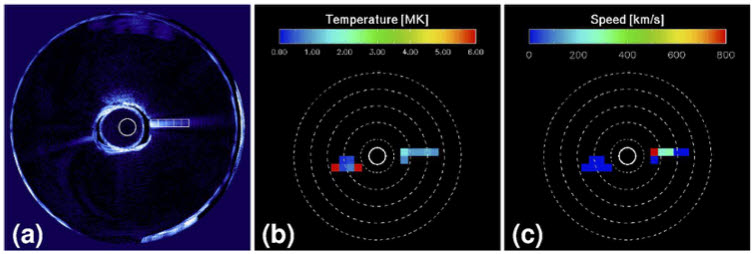
The Korea Astronomical Research Institute (Director Hyung-mok Lee) announced on the 18th that as a result of observations of the solar corona graph with NASA, the temperature and velocity values of the corona area were obtained at the same time.
Corona is the outermost region of the solar atmosphere.
The sun’s surface temperature is around 6000 degrees, but the outer atmospheric layer, the corona temperature, is 1 million to 5 million degrees higher, which is not explained by the laws of physics. Although it expands to the entire solar system through a high-speed solar wind, the acceleration mechanism of this solar wind is also an unknown scientific challenge.

In September 2019, after jointly developing a corona graph with NASA and putting it on a scientific balloon, Cheon Mun-yeon observed the corona for the first time in the stratosphere at an altitude of 40 km. Analysis of the measurement data confirmed that electrons accelerated at a speed of 260 km per second at a temperature of 1 million degrees in the outer corona region.
This is the first time that the temperature and speed values of the corona have been obtained at the same time.
With the existing corona graph, only the electron density in the outer corona region was measured through polarization observation.
The research team succeeded in measuring temperature and speed at once by developing a technology that allows not only polarization observations but also spectrum observations using multiple filters. The research team plans to develop a next-generation corona graph by 2023 and install it on the International Space Station (ISS).
Senior Researcher Kim Yeon-han said, “It will make a great contribution to solving the secrets of corona heating and solar wind acceleration, which are the challenges of solar research, while pioneering an independent path for low-cost and high-efficiency solar exploration research.”
The results of this study were published in the international journal’Solar Physics’ on the 12th.
Chungcheong = Reporter Kang Woo-sung [email protected]
